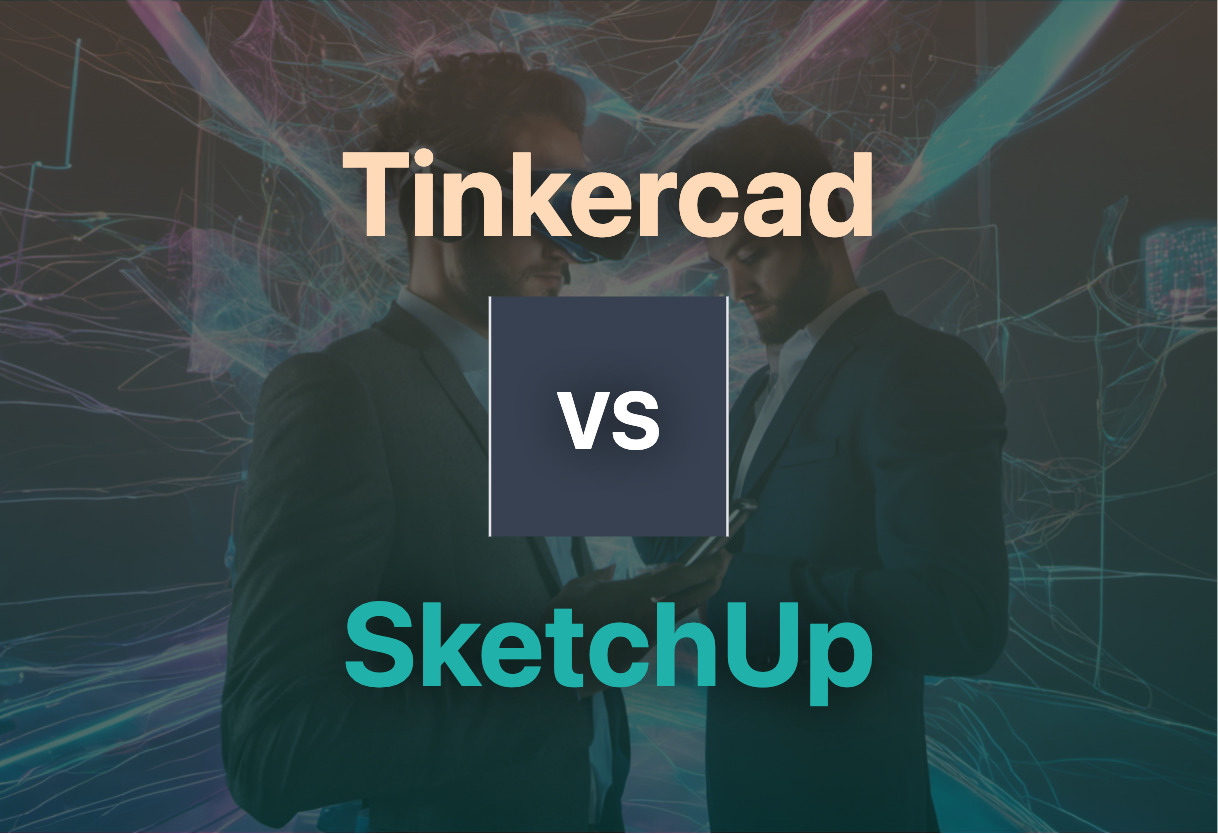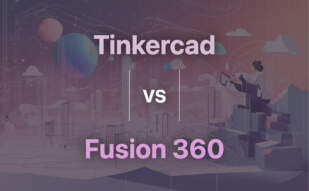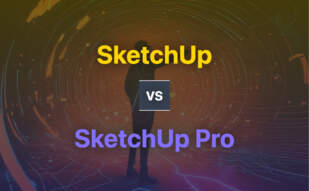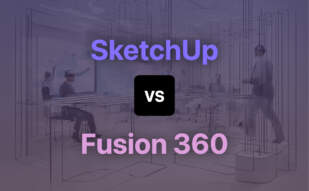For newcomers requiring an intuitive and elementary start in 3D design, Tinkercad leads the way with its user-friendly interface and powerful features for 3D printing. SketchUp, however, is recommended for professionals seeking advanced features, precise rendering, and complex architectural design capabilities.

Key Differences Between Tinkercad and SketchUp
- Usage: Tinkercad is ideal for beginners or educational purposes, while SketchUp is used in a range of professional fields like architecture and game development.
- Features: Tinkercad offers a simplified constructive solid geometry approach, while SketchUp provides robust rendering options, extensions, and ‘Push/Pull’ technology.
- Platform: Tinkercad is browser-based with MIDI support, SketchUp offers both web and desktop versions but extensions are not supported on its free version.
- Pricing: Tinkercad is free, SketchUp offers a free web-based version with progressively more functional paid versions.
- Ownership: Tinkercad is owned by Autodesk, SketchUp belongs to Trimble Inc.
- Models Sharing: Tinkercad designs are shared under a Creative Commons license, SketchUp boasts a 3D Warehouse for model sharing.
| Comparison | Tinkercad | SketchUp |
|---|---|---|
| Ownership | Autodesk | Trimble Inc. |
| Launch Year | 2011 | 2000 |
| Focus Area | 3D modeling, 3D printing, constructive solid geometry for general users | Professional 3D modelling in architecture, interior design, industrial/product design, landscape architecture, civil/mechanical engineering, film and video game development |
| Type | Online, requires WebGL-enabled browser | Web-based app and paid subscriptions: SketchUp Shop, SketchUp Pro, SketchUp Studio |
| WebGL Support | Yes | No |
| Distinguishing Features | Browser-based electronic circuit simulator, 2D to 3D transformation, design structures with Lego bricks, Introductory 3D printing software | Features Smart Drawing Tools, Extensive 3D Warehouse, Plugins and Extensions, Real-time Collaboration, Impressive Rendering Options |
| Design Interface | Designs movable/rotatable from all angles, drag and drop functionality. | SketchUp Pro praised for its intuitive interface, easy to use for beginners and pros |
| Export Formats | Exports in STL, OBJ format and to Minecraft Java edition | Exports in .3DS, .DAE, .DEM, .DDF, .DXF, .DWG, .IFC (.IFCZIP), .KMZ, .STL, PDF (Mac Only) |
| Compatibility for AR | iPad compatibility for AR functionality | No AR Support |
| Support Resources | Extensive resources available | Extensive resources available |
What Is Tinkercad and Who’s It For?
Tinkercad, an online, free 3D modeling software owned by Autodesk, is a popular platform for 3D printing and a primer in constructive solid geometry. It heralds its origins from an ambition to democratize 3D modeling, all user designs published under a Creative Commons license. With an easy-to-use interface and flexible design tools, Tinkercad is recognized for its user-friendly design that appeals to both beginners and professionals.
Introduced by former Google engineer Kai Backman and Mikko Mononen, Tinkercad champions accessibility and education, widely employed across schools. It stands out for its unique features like the “Circuits Section,” a praised browser-based Electronic circuit simulator, and the ability to transform 3D designs into buildable brick models. Tinkercad is most suitably used for 3D printing.

Pros of Tinkercad
- Easy-to-use interface
- Flexible design tools with drag and drop functionality
- Ability to transform 3D designs into buildable Lego brick models
- Compatible with iPad, designs can be brought to life with AR
- Abundant support resources
Cons of Tinkercad
- Online-based, requires WebGL-enabled browser
- Limited custom shape creation
- Faces competition from SketchUp, Fusion360
What Is SketchUp and Who’s It For?
SketchUp is a multifaceted 3D modeling software developed by Trimble Inc., renowned for its implementation in diverse fields, including architecture, interior design, industrial and product design. Available in both free and paid versions, with increasing functionality, SketchUp offers drawing layout performance, surface rendering in varied styles, and allows model placement within Google Earth, providing beginners and pros an intuitive user experience.
Founded by Brad Schell and Joe Esch’s startup, later bought by Google and Trimble Inc., the Pro version of SketchUp is favored for its smart drawing tools, extensive 3D Warehouse, and impressive rendering options. It’s compatible with V-Ray for photorealistic renders and is recognized for its precision and accuracy.

Pros of SketchUp
- Intuitive user interface
- Extensive 3D Warehouse
- Features smart drawing tools and impressive rendering options
- Compatible with V-Ray for photorealistic renders
- Wide range of extensions and third-party additions
Cons of SketchUp
- Free version doesn’t support extensions
- Switched to subscription business model
- Some advanced features require paid subscriptions
The Ultimate Face-Off: Tinkercad vs SketchUp
As we reach the climactic verdict on the Tinkercad versus SketchUp battle, remember, the definitive choice hinges on your specific needs and project requirements.
Hobbyist Designers
If you’re a hobbyist designer or educator, Tinkercad is the clear winner. Its user-friendly design, compatibility with iPad, and ability to bring creations to life through AR make it a hit among beginners. It is safe, secure, and ideal for 3D printing simple designs. Not to mention, the wealth of support resources available for guidance.

Professional Architects and Engineers
For a better-suited professional arena, SketchUp steals the show. Its extensibility via plugins, compatibility with V-Ray for realistic renders, and impressive array of drawing tools and rendering options give it an edge. Plus, it supports a multitude of formats and boasts a cloud-based 3D Warehouse to store and share models, ideal for collaboration in large teams.

AR/VR Developers
For AR/VR developers, both software have their perks. With Tinkercad’s AR compatibility, you can animate designs, while SketchUp offers immersive environment creation capabilities. However, Tinkercad’s simplicity may prove limiting, making SketchUp the preferred choice for greater detail and complexity.

In the epic Tinkercad versus SketchUp clash, choose Tinkercad for user-friendly, beginner-level design projects, particularly in education or hobbyist situations. For professional-level design, architecture, and engineering, SketchUp’s advanced features and extensibility make it a formidable contender.
Hannah Stewart
Content writer @ Aircada, tech enthusiast, metaverse explorer, and coffee addict. Weaving stories in digital realms.





